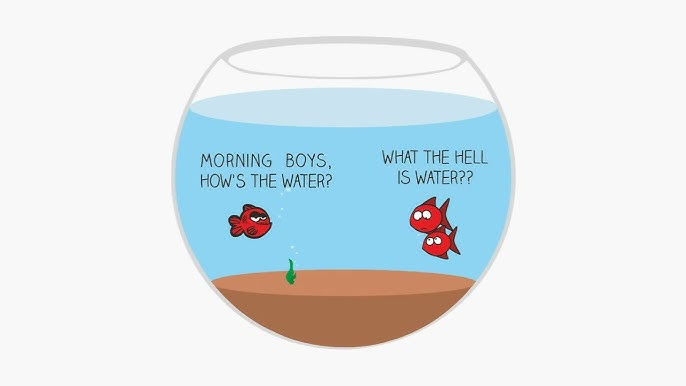For no particular reason, this week I want to tell you about a concept I teach in a lot of my storytelling workshops: I call it ambient narrative.
Recently I got to teach some of the folks at The States Project about storytelling. They’re a pretty incredible Democratic organization that raises money for key state legislative races to flip state legislatures blue. We were talking about ways to use stories in fundraising conversations, to help engage new donors. And ambient narrative came up right away.
We tell anecdotes all the time, right? But there are also stories that we don’t even bother to tell, because they’re just “understood.” These are stories that float around in a given community – communities as small as a nuclear family, and as large as a nation. They’re like the water you’re swimming in, so you don’t necessarily even know it’s there. Those are the ambient narratives.
The ambient narrative in my family has always been that I’m the baby. I’m sillier, more indecisive, less responsible than a “real” grownup. I’ve quit jobs, taken clown classes. I own wigs.
This stayed true even when my brother had a literal baby. In fact, when my oldest niece was tiny, and she didn’t know my name yet, once I left the room and she looked around for me and went: “Other baby? Other baby?”
Never mind that I run a business and do my literal taxes. This kind of story is hard to shake! I’m in my forties, and a lot of times, I’m still the baby. Last Thanksgiving, it was me and that niece explaining TikTok to everyone else at the table.
The same thing happens in workplaces. It’s the unspoken “way we do things,” that you have to explain to a new hire. “We don’t do anything to upset the board,” or “We ask forgiveness, not permission around here,” or “That’s basically Stacy’s stapler, use the other one.”
Geographical places have ambient narratives, too. New Yorkers come together in a crisis. You don’t mess with Philly. The whole concept of Midwestern nice.
And of course, our social and political landscape is run by ambient narratives – powerful understandings of “how it’s always been” in systems, or in one political party or another. I don’t feel like enough of a political commentator (or maybe I feel too cynical) to name these here, but I think we can name a lot of them - on the left and the right.
How do you use this idea in storytelling? Well, if you’re trying to tell a story that will convince someone— to give you money, or join your cause, or understand your decisions, or green light your project— and you know some of the ambient narratives of the context where you are, you can push against that narrative or use it to your advantage. You know what you’re up against.
And here’s the thing: ambient narratives can be sticky, since they’re often unspoken, but they’re not permanent. Still, it usually takes giant moves, seismic shifts, and often intentional effort, to actually change an ambient narrative.
Maybe it’s a shakeup in leadership in an org. An activist movement on college campuses that catches on. A presidential candidate suddenly stepping back. Or a shift in the family structure – I mean, more babies could maybe topple me from the Family Baby throne.
And you can also raise those unspoken stories, name them, and offer alternatives. Tell “counternarratives.”
So what are the ambient narratives running in your spaces right now– family, neighborhood, religious organization, political landscape? Do you agree with them, or are they just “how it is?”
And what’s the other story you could tell?





In organizations, this is called system theory by Niklas Luhmann. I've seen a great comical explanation of the concept here (content in German): https://meeting-time.de/wie-funktioniert-systemische-organisationsentwicklung/
The explanation of how it can change goes into your thought "counternarratives" - but your baby niece basically did the first part of it: calling on the system (or ambient narrative) at work by saying out loud that there is another baby and that she is confused by this narrative.
The key to change it lies in observing the mechanics and understanding the tradeoffs and caveats of their costs vs their benefits:
An example: you are still the baby has the benefit of everybody in the family knowing exactly who is being referenced at the cost of the confusion of your niece's and your self-understanding.
this was a great newsletter. and what's really impressive is that it was written by a baby.